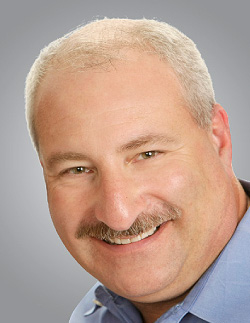
Scott Redler
Vice President, Franchising/COO
It’s obvious Scott Redler loves his job as a head of one of the country’s fastest-growing restaurant chains. He sums up the company’s success in one phrase, said in good fun: “It’s all about the food, stupid.”
Freddy’s Frozen Custard and Steakburgers was developed by Redler and his partners, Bill and Rick Simon, in 2002. The first location opened in Wichita, Kan.; the company now has 52 locations in eight states. A 32 percent growth rate is projected for 2011, with the addition of 22 stores. In 2010, Freddy’s was ranked among the top 10 fastest-growing chains by Nation’s Restaurant News.
Freddy’s focuses on serving up 85 percent lean, premium, all-beef steakburgers, “stick” French fries, Chicago-style hot dogs, and custard and specialty desserts.
“We provide a high level of hospitality for our guests,” Redler says. “Everything is cooked to order and we make the custard fresh throughout the day.”
Despite its growth, the Wichita-based company doesn’t have a specific plan for expansion. That’s because it sets the bar high for new franchisees, or Fred-Heads. The company’s philosophy is to meet and get to know every potential franchisee, visit all building sites, and attend the opening of every new store. —G.V.
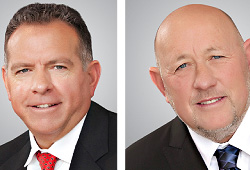
Dan Wilks
CEO
Farris Wilks
COO
Necessity is the mother of invention, they say, and the Wilks brothers would probably agree. Starting out as bricklayer-helpers for their father, Dan and Farris (from left, above) successfully built multiple companies in construction, including two they co-founded, Wilks Masonry and Cisco High Lift. But spotting an opportunity to shift gears, the brothers jumped into the oil and gas exploration business in the Barnett Shale.
When they went looking for someone to fracture (or “frac”) their first well, however, the pair discovered they were among many operators seeking such services, with few suppliers to provide it. As a result the brothers created Cisco-based Frac Tech Services in 2002. Not able to buy the necessary pressure pumping trucks, they used the technical know-how of CHL to build their own. Not able to secure enough financing, they used the cash flow of Wilks Masonry to fund it.
It was a risky but well-timed move.
Unconventional shale plays, which require hydraulic fracking services to get at natural gas in rock formations, took off like a rocket, and so did Frac Tech’s business. By 2010 the company had grown to more than 3,000 employees and sales of $1.17 billion, according to SEC filings. The company filed to go public on the New York Stock Exchange. In April of this year, a group of investors paid $3.5 billion for 70 percent of the company, according to The Wall Street Journal. Frac Tech still plans to go public. —M.D.
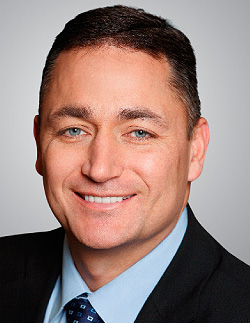
John Goodman
Chairman and CEO
John Goodman knew he needed to remain agile and forward-thinking to keep his competitive edge when, along with his four brothers and partners, he founded Goodman Networks Inc. 11 years ago in the ever-changing telecom industry.
“We believed we could fill a need for multi-vendor, integrated, end-to-end telecommunications services for the industry,” Goodman says. And, that’s just what they did.
In keeping with the industry’s only constant—change—the telecom design, engineering, deployment, and maintenance company has seen tremendous growth under Goodman’s leadership as it responds to customer needs. When wireline revenue hit a slump a few years back, Goodman led the company into a broader offering of wireless services to expand its reach.
Not satisfied to limit its ideals to “industry standards,” the Plano-based company has implemented a world-class safety program, in-house training and developmental programs, higher certification standards for employees, a streamlined project management controls office, and pioneering technological infrastructures.
The future looks bright for Goodman, as he has created an innovative company culture while instilling a mindset to “always make tomorrow better than yesterday.” —K.A.
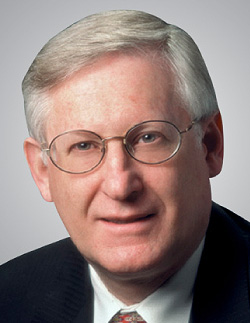
Gerald Rubin
CEO
In 1968, at the age of 24, Gerald Rubin started a small hair-care products manufacturing company in El Paso with a staff of one—himself.
He had big plans for his company, and he was willing to work hard to make them happen. When he was turned down for a $1 million line of credit from a local bank, he knocked on doors until he secured a line of credit from a Dallas bank. In the 1980s he flew to California and convinced Hollywood hair stylist Vidal Sassoon that Helen of Troy was the best company to market Sassoon’s line of hair-care products.
El Paso-based Helen of Troy is now a multimillion-dollar personal care and household products company, with seven warehouses and 877 employees throughout the world. The company’s product list includes hair dryers, curling irons, hair accessories, and household products such as tools for the kitchen and garden, storage, and hardware.
“Innovation is critical in our business, and you must pay attention to details and maintain a high sense of urgency while serving your customers,” Rubin says.
His company recently expanded to health-care products with its acquisition of Kaz Inc., a Massachusetts manufacturer of vaporizers, humidifiers, and air purifiers. Helen of Troy’s sales are expected to exceed $400 million by the end of 2011. —G.V.
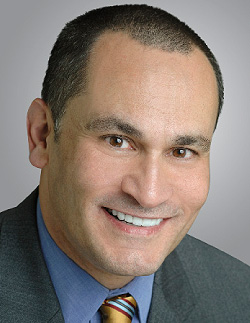
William Lucia
CEO
When William Lucia decided two years ago to get health insurance company HMS Holdings Corp. into a new business, he didn’t waffle or bring in a consulting firm to endorse the idea.
“I forced that decision through the company,” says Lucia, HMS’ CEO.
Decisiveness and bold thinking have long been Lucia’s hallmarks at HMS. Under his decade of leadership—first as president and then as CEO—he has transformed a once cash-strapped company by divesting failing businesses, cementing its core strength of coordinating benefits for state government, and plunging into new lines of business.
In 2006, Lucia led an acquisition that nearly doubled the size of the Irving-based company while eliminating a key competitor. The company has also used acquisitions to enter the fields of Medicaid managed care; fraud, waste, and abuse detection; and self-insured employers.
Under his leadership, the company’s once-feeble stock has grown more than 6,000 percent, and its market capitalization has risen from $30 million to $2.2 billion. Revenue is expected to hit $370 million this year, up from about $300 million in 2010.
Lucia chalks up much of his success to being bold in an industry that is often the opposite. “Taking chances is one of the keys to any entrepreneurial leader,” he says. “Don’t become complacent.” —S.G.

Michael Dardick
CEO
The complexity of real estate deals has evolved since Michael Dardick started Granite Properties 19 years ago to take advantage of the distressed market. But his resolve to write his own rule book has served him well.
“I’m more of a curious learner who likes to take on new challenges and enjoys competing,” says Dardick, CEO of Plano-based Granite Properties, a real estate investment and management company with additional offices in Houston, Atlanta, and Denver. “I’m not a strict rule-follower.”
His philosophy is for Granite Properties to operate like a big company, in terms of investing in size and complexity, but to make decisions with the entrepreneurial zest and speed of a small company.
The investment business is cyclical; Dardick describes revenue ebbs and flows like scaling a mountain. Revenue growth has been steady since inception, and the 135-employee company now owns, manages, and leases more than 10.5 million square feet of office, industrial, and retail property.
Notable deals in 2010 for Granite included Park Seventeen, a mixed-use project in Uptown, which received LEED gold certification, the highest “green” rating in the industry. This year the company is planning to expand its southern market, so it will have operations on both the East and West coasts. —K.N.





